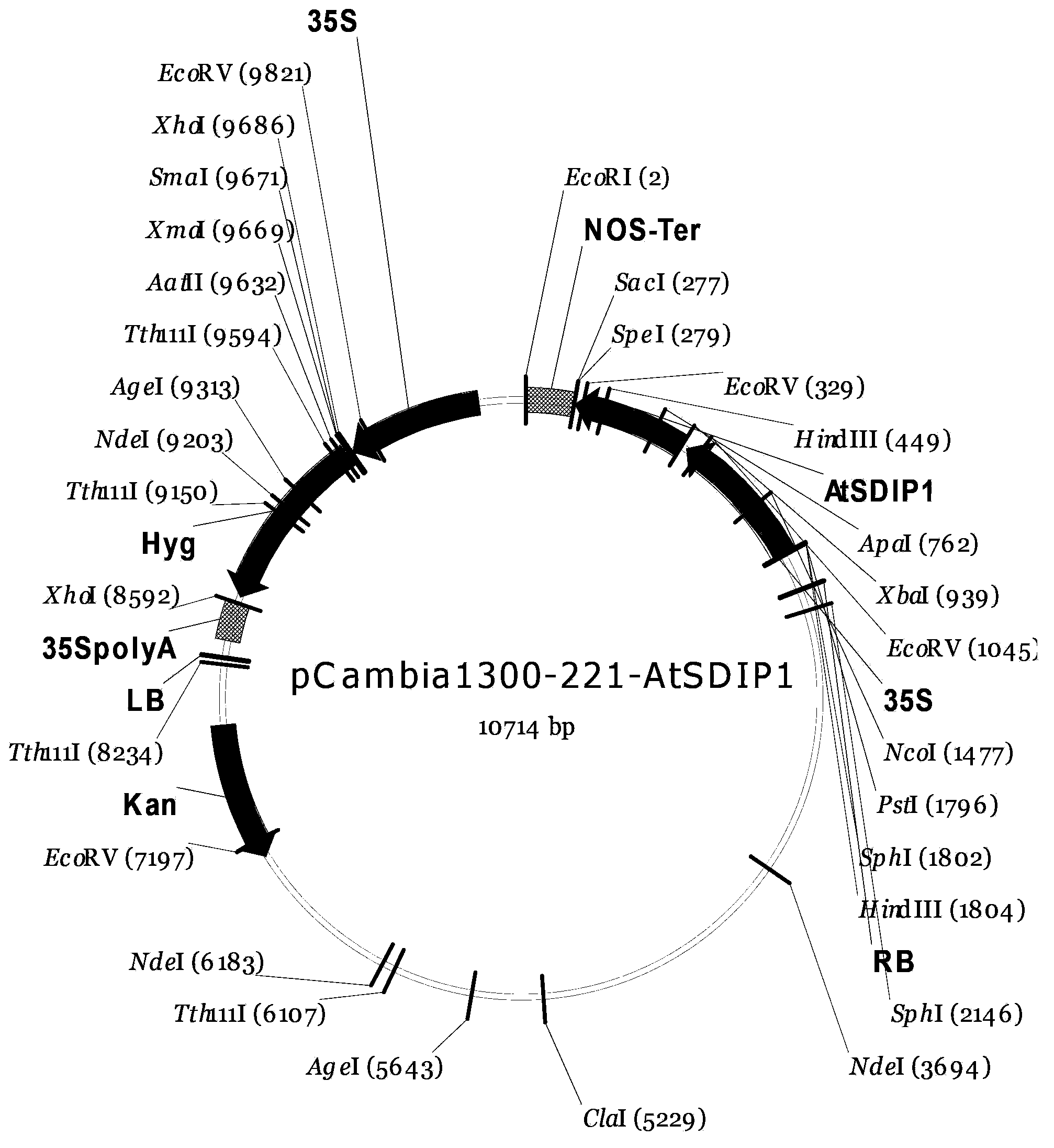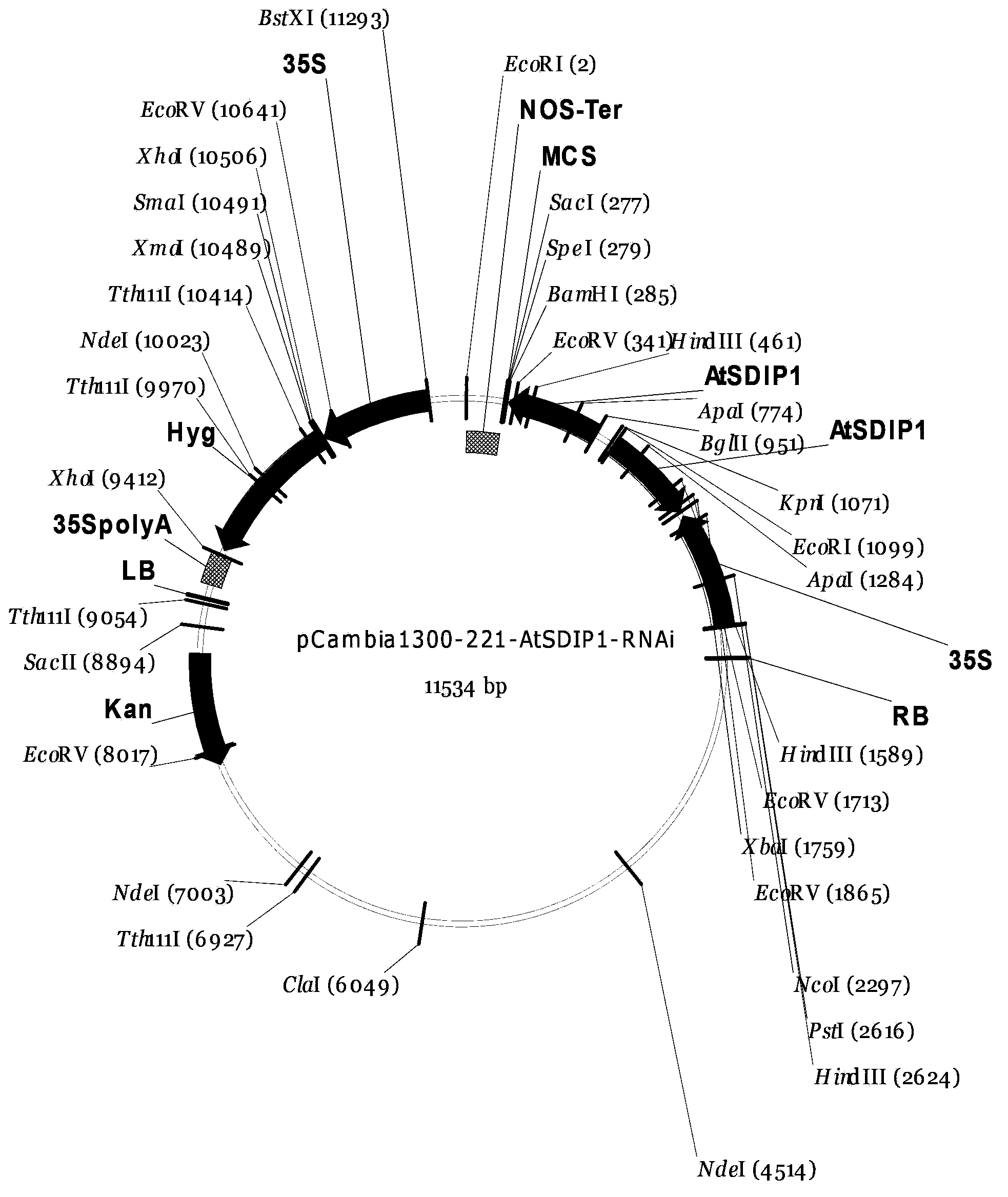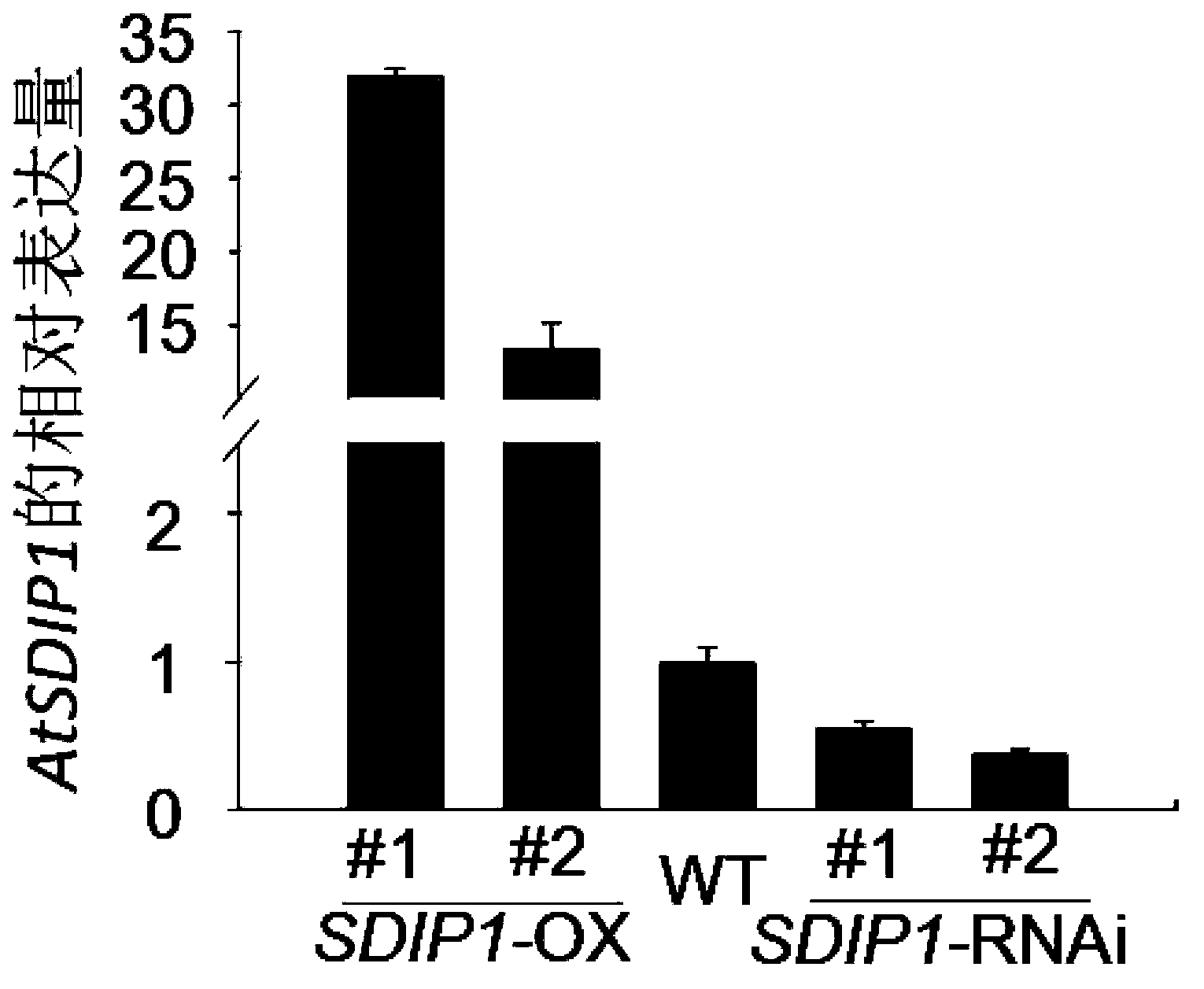Plant salt-tolerance-related protein AtSDIP1, and coding gene and application thereof
A plant and salt tolerance technology, applied in the plant salt tolerance-related protein AtSDIP1 and its coding gene and application field, can solve the problems of ion toxicity, plant water shortage, and difficulty in water absorption of plant roots
- Summary
- Abstract
- Description
- Claims
- Application Information
AI Technical Summary
Problems solved by technology
Method used
Image
Examples
Embodiment 1
[0101] Embodiment 1, the acquisition of AtSDIP1 gene overexpression plant and AtSDIP1 gene suppression expression plant
[0102] 1. Construction of overexpression vector
[0103] Replace the small fragment between the SmaI and XbaI restriction sites of the vector pCAMBIA1300-221 with the double-stranded DNA molecule shown in the 85th-747th nucleotide of the sequence 2 from the 5' end to obtain the recombinant plasmid pCAMBIA1300-221 - AtSDIP1 (i.e. overexpression vector). The schematic diagram of the structure of the recombinant plasmid pCAMBIA1300-221-AtSDIP1 is shown in figure 1 , AtSDIP1 gene is regulated by 35S double promoter.
[0104] 2. Construction of Inhibition Expression Vector
[0105] The double-stranded DNA molecule shown in sequence 3 of the sequence listing (in sequence 3, nucleotides 1 to 663 from the 5' end is the reverse complementary fragment of the AtSDIP1 gene, and nucleotides 664 to 853 are spacer fragments , the 854th to 1516th nucleotides are the At...
Embodiment 2
[0125] Example 2, Salt tolerance identification of AtSDIP1 gene overexpression plants and AtSDIP1 gene suppression expression plants
[0126] The T of two AtSDIP1 gene overexpression lines (SDIP1-OX#1 strain and SDIP1-OX#2 strain) were randomly selected. 3 For generation seeds, T 3 Substitute seeds, take the seeds of Columbia ecotype Arabidopsis (WT) plants, and take the T of empty vector plants 3 Substitute seeds were identified for their salt tolerance as follows:
[0127] 1. Surface sterilize the seeds with 10% bleach, and then wash 3 times with sterile water.
[0128] 2. Group processing
PUM
 Login to View More
Login to View More Abstract
Description
Claims
Application Information
 Login to View More
Login to View More - R&D
- Intellectual Property
- Life Sciences
- Materials
- Tech Scout
- Unparalleled Data Quality
- Higher Quality Content
- 60% Fewer Hallucinations
Browse by: Latest US Patents, China's latest patents, Technical Efficacy Thesaurus, Application Domain, Technology Topic, Popular Technical Reports.
© 2025 PatSnap. All rights reserved.Legal|Privacy policy|Modern Slavery Act Transparency Statement|Sitemap|About US| Contact US: help@patsnap.com



